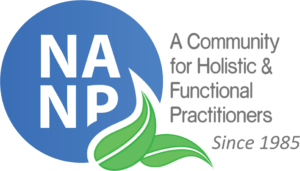By: Mary Beth Gudewicz

As holistic nutrition professionals, we work day-to-day with our clients offering nutritional support when they contract a respiratory virus. Recently, I was faced with my own respiratory illness and utilized the following to help me move through the life of the virus.
Bone Broth: My appetite was nearly non-existent, but I knew I had to get nutrients in my body in order to start recovering. Bone broth was a great choice because it contains amino acids (protein) such as arginine, glutamine, and cysteine and electrolyte minerals such as calcium, magnesium, phosphorus, zinc, manganese, copper, boron and iron to improve hydration. It was also easy on the digestive system that was a bit dysregulated with the virus.
Smoothies: Smoothies are a great way to get antioxidants, healthy fats and protein into the body. I included mixed berries, chia seeds, coconut water, spinach, cucumber and celery.
Vitamin C: Vitamin C is a powerful antioxidant and works with other antioxidants such as glutathione and vitamin E (Marz, 1999). Antioxidants can be looked at as the “bricks that build the wall” of your immune system. In another study, vitamin C showed it reduced the duration of symptoms (Abioye Al, 2021). I like superfoods and found the form Camu Camu worked best for my body.
- Food sources: Bell peppers, Oranges, Strawberries, Kiwifruit, Acerola Berries, Guava
Vitamin D: Vitamin D has shown in studies that it helps support the immune system (Pieter-Jan Martens, 2020). In another study, it showed a decrease in the duration of respiratory viruses (Abioye Al, 2021). I had my labs checked, so I knew the amount I needed to take. I also made a point of spending about 10-15 minutes a day sitting in the sunshine. Sunshine helps synthesize vitamin D in your body. (Marz, 1999)
- Food sources: Sardines, Codliver oil, Mackerel, Tuna, Mushrooms, Egg yolk
Magnesium: Magnesium has been shown in studies to help support the immune system as one of its many benefits. (M Tam, 2003). I included Epsom Salt Baths into my regimen. They are a great source of magnesium and it helped my body to relax by easing the aches and pains that came with this virus.
- Food sources: Buckwheat flour, Tofu (firm), Figs (dried), Black-eyed peas (cooked), Swiss Chard, Almonds, Cashews
How to take an Epsom Salt Bath: Dissolve the Epsom salts in a jug of water. Add the Epsom salts to the bath while the water is running. Relax for about fifteen minutes in the bath. You don’t want to get chilled when you are sick. Then get out of the tub and give yourself a vigorous rub with your towel.
Zinc: Zinc has been shown to shorten the duration of respiratory viruses. (Abioye Al, 2021). Our immune system uses zinc. (Marz, 1999)
- Food sources: Oysters, Alaska King Crab, Grass-fed/finished beef, Turkey (dark meat), Swiss Chard, Lima Beans, Potato (baked), Mustard Greens, Pumpkin Seeds
Probiotics: Part of our immune system resides in our gut. Probiotics can help balance the bad and good bacteria in your gut. This virus affected my digestive system and adding the probiotics helped calm it down.
- Food sources: Sauerkraut, Pickles, Organic Plain Yogurt, Miso, Tempeh, Kefir, Kimchi
Far Infrared Sauna: Far infrared saunas can help to raise your core body temperature, which helps boost your immune system (C.V. Harper, 2018), stimulate the production of white blood cells, and when you sweat, eliminate toxins.
Wet Sock Treatment: This natural therapy goes back to my childhood. It can stimulate the immune system and increase blood circulation. It helped reduce my high fever and cleared my head. I started it the first day I was sick and for the next few days.
What you need:
1 pair very thin socks
1 pair wool socks
1 bowl ice water
1 warm bath or a foot tub with very warm water
Instructions:
- Soak the pair of thin socks in the bowl of ice water. When the socks are completely wet, remove them from the water and wring them out thoroughly.
- Take a warm bath. Warming the feet is an important step. Once the feet have been warmed for 10 minutes, go onto the next step.
- Dry off feet with a dry towel, if used foot tub. If used bath, dry off your entire body.
- Place ice-cold wet socks on feet. Then cover the wet socks with the wool socks. Put on your pajamas, get under the warm blankets and go to sleep.
- Wear the socks overnight. The wet, cotton socks should be dry come morning.
In addition to the above, I also made sure I was hydrated, eliminated refined-sugar, added an Antioxidant Boost (recipe below), and listened to my body when it needed to sleep or rest and didn’t fight being sick. When we are ill, we can become frustrated, angry or fearful. By allowing yourself to be more in a flow, treating your symptoms and listening to what your body needs are all great ways to support the body.
Antioxidant Boost (I had 2 tablespoons 2x/day)
Ingredients:
3 organic grapefruit peels
3 organic lemon peels
Instructions:
- Put the grapefruit and lemon peels into a pot with 3” of water. You can add pieces of the lemon and grapefruit to give it a more intense flavor.
- Simmer for three hours.
- Refrigerate half and freeze the other half.
- Makes 2 quarts.
References
Abioye Al, B. S. (2021). Effect of micronutrient supplements on influenza and other respiratory tract infections among adults: a systematic review and meta-analysis. BMJ Global Health, 6:e003176.
C.V. Harper, D. W.-A. (2018, May 29). Temperature regulates NF-KB dynamics and function through timing of A20 transcription. Retrieved from PNAS Proceedings of the National Academy of Sciences of the United States of America: https://www.pnas.org/content/115/22/E5243
M Tam, S. G.-G. (2003, October). Possible roles of magnesium on the immune system. Retrieved from National Library of Medicine: PubMed.gov: https://pubmed.ncbi.nlm.nih.gov/14506478/
Marz, R. B. (1999). Medical Nutrition from Marz 2nd Edition. In N. M. Russell B. Marz, Medical Nutritin from Marz 2nd Edition (pp. 235-241). Portland, Oregon, United States: Omni-Press.
Pieter-Jan Martens, C. G. (2020, April 28). Vitamin D’s Effect on Immune Function. Retrieved from Nutrients MDPI, NCBI Resources, PMC US National Libray of Medicine, National Institutes of Health: https://www.ncbi.nlm.nih.gov/pmc/articles/PMC7281985/
